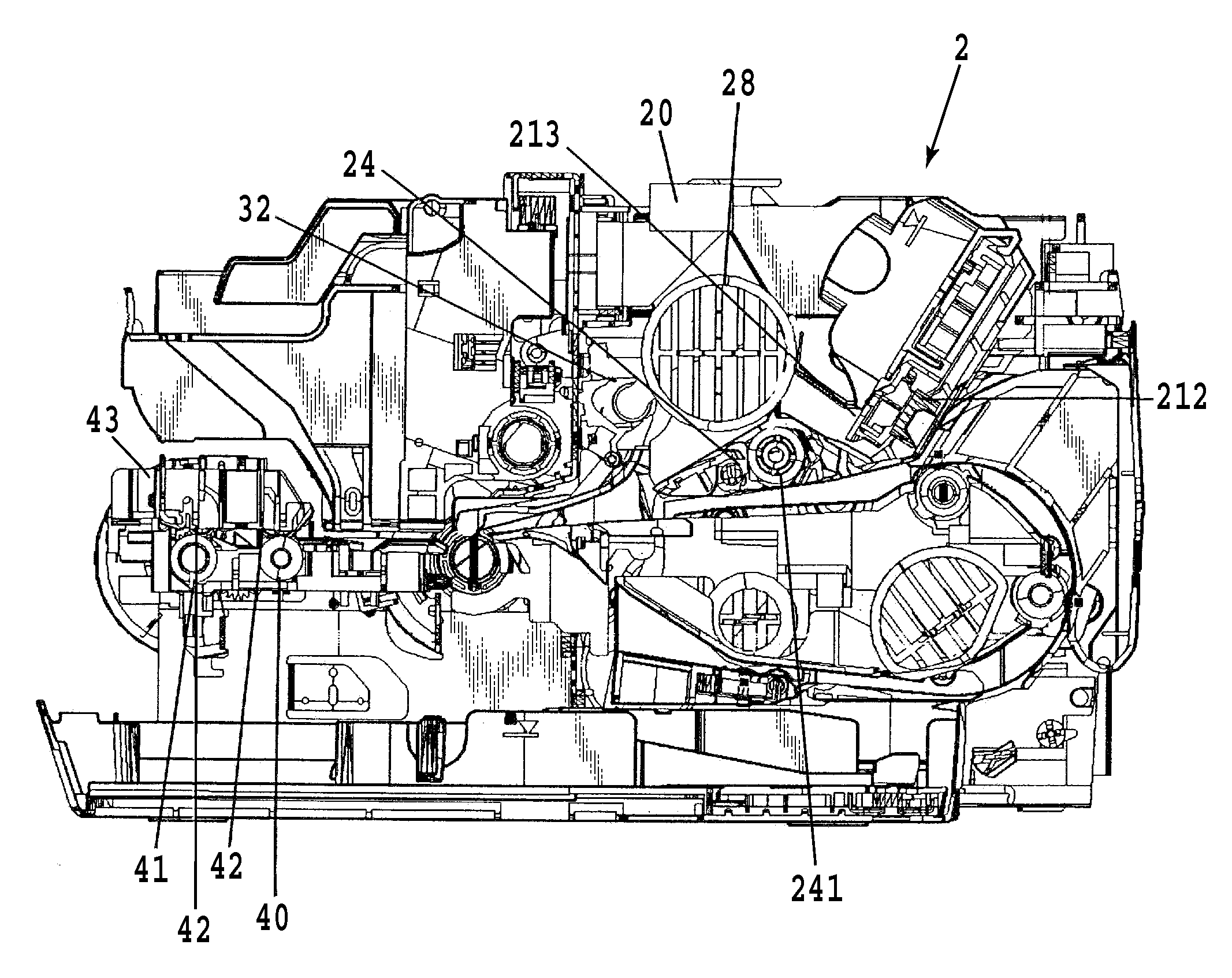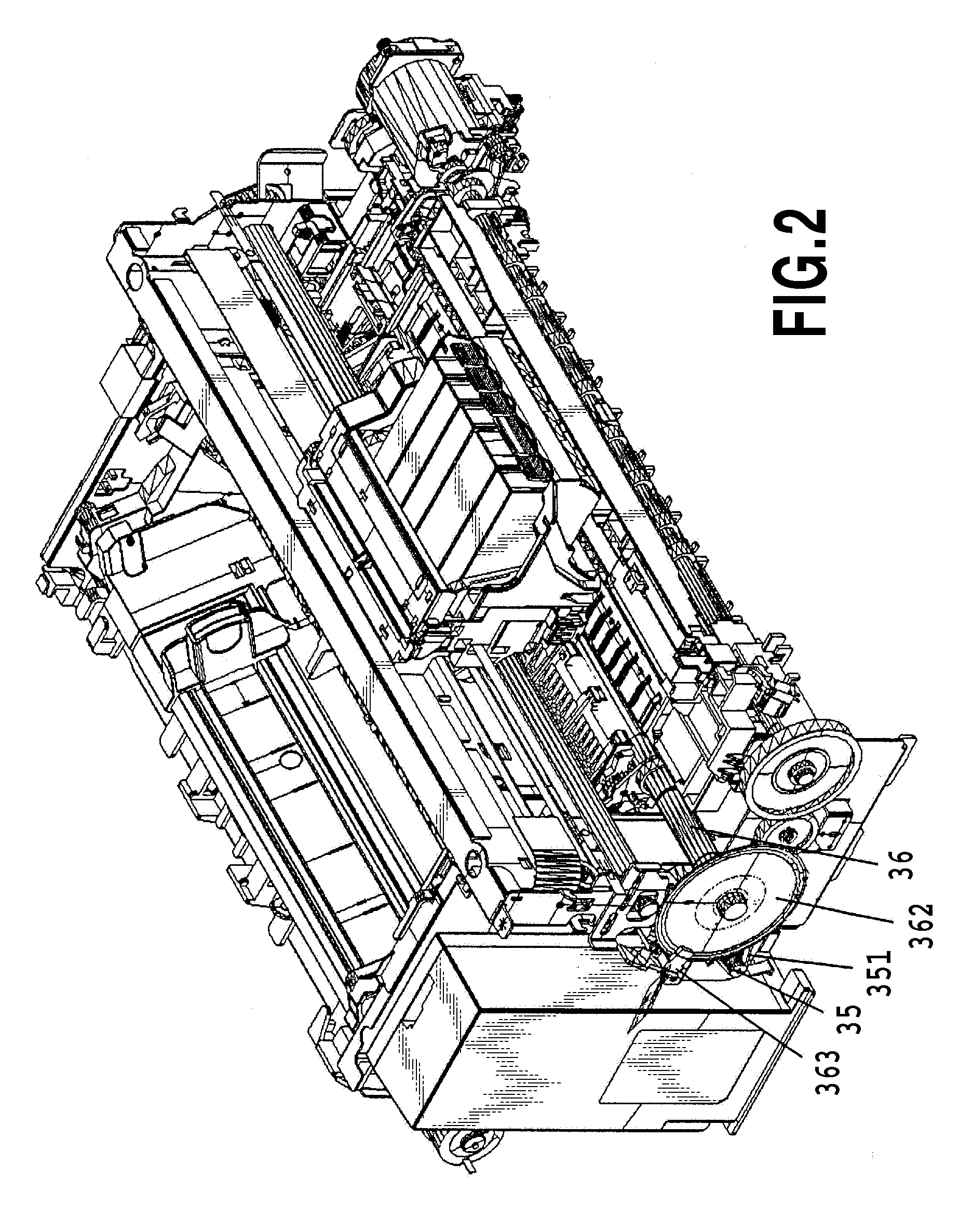Inkjet printing apparatus and method of controlling the apparatus
a technology of printing apparatus and control apparatus, which is applied in the direction of control system, printing, electric motor control, etc., can solve the problems of insufficient filling, inability to smoothly perform ink supply, and insufficient supply, so as to improve the performance of pressure generating unit, increase the size of the apparatus, and improve the effect of pressur
- Summary
- Abstract
- Description
- Claims
- Application Information
AI Technical Summary
Benefits of technology
Problems solved by technology
Method used
Image
Examples
first embodiment
[0045]An inkjet printing apparatus (also referred to simply as “printing apparatus” hereinafter) according to a first embodiment of the present invention with reference to FIG. 1 to FIG. 12. FIG. 1 and FIG. 2 are views illustrating the printing apparatus according to the first embodiment viewed in different directions respectively, and FIG. 3 is a lateral cross-sectional view of the printing apparatus. FIG. 4 is a view illustrating a printing head applied in the embodiment viewed from the ejection face side. FIG. 5 and FIG. 6 are perspective views illustrating a cleaning unit in the printing apparatus according to the first embodiment in different directions respectively; FIG. 7 is a view schematically showing an ink suction mechanism in the cleaning unit; FIG. 8 and FIG. 9 are cross-sectional views each showing a pump in the cleaning unit; and FIG. 10 is a perspective view illustrating the pump. FIG. 11 is a block diagram illustrating an example of a configuration of a control syst...
second embodiment
[0092]A second embodiment of the present invention is described below with reference to FIG. 14 and FIG. 15. FIG. 14 is a cross-sectional view schematically showing a configuration in which a tube is pressed by a dual sucking pump constituting a plurality of pressure generating unit, namely by two pump elements (rollers). FIG. 15 is a graph showing a current PWM value for a source of a driving force.
[0093]As described above, to optimize the processes performed in a printing apparatus for resolving clogging or for sucking ink for filling, it is required to manage a pressure generated by a pressure generating unit and a discharge rate extremely precisely. To achieve the object, in an inkjet printing apparatus having a plurality of pump elements, it is necessary to detect phases of the plurality of pump elements at positions for generation of a negative pressure, and also to determine each of the phases. When power sources, phase detection sensors, load fluctuation detecting units and ...
third embodiment
[0110]A third embodiment of the present invention is described below with reference to FIG. 16 and FIG. 17. FIG. 16 is a cross-sectional view schematically showing a dual pump system according to the third embodiment, and FIG. 17 is a graph showing a current PWM value for a source of a driving force in this embodiment.
[0111]A configuration similar to that in the second embodiment is employed in the third embodiment, but the third embodiment is different from the second embodiment in the point that a first roller 821 and a second roller 822 are located out of alignment by about 180 degrees in the rotating direction. Furthermore, a projection 824 for generating load fluctuations is provided at a position where the projection 824 acts only to the first roller 821 in the inner side from a pump base 823. This projection 824 is located at a position displaced by a certain angle in the rotational direction of the first roller 821 from a tube-overlapped position by arranging the tube over a...
PUM
 Login to View More
Login to View More Abstract
Description
Claims
Application Information
 Login to View More
Login to View More - R&D
- Intellectual Property
- Life Sciences
- Materials
- Tech Scout
- Unparalleled Data Quality
- Higher Quality Content
- 60% Fewer Hallucinations
Browse by: Latest US Patents, China's latest patents, Technical Efficacy Thesaurus, Application Domain, Technology Topic, Popular Technical Reports.
© 2025 PatSnap. All rights reserved.Legal|Privacy policy|Modern Slavery Act Transparency Statement|Sitemap|About US| Contact US: help@patsnap.com



